According to a news release from the Ministry of Defence, the Carrier Strike Group will undertake anti-Submarine exercises with the US Pacific Fleet, allied submarines, helicopters and P-8 Maritime Patrol Aircraft.
According to a news release here:
“Overall these events represent a crucial milestone in the regeneration of the UK Carrier Strike capability that will contribute to collective defence and security for decades to come. Carrier Strike Group 21 embodies the Prime Minister’s vision for the UK as an outward facing, modern and responsible international actor who also takes its global defence and security responsibilities seriously and invests in them accordingly.”
UK Defence Secretary Ben Wallace said:
“As we witness a tilt in power towards the Indo-Pacific region, we are committed to working with our partners here to defend democratic values, tackle shared threats and keep our nations safe.
The involvement of the UK’s fifth generation Carrier Strike Group in this significant series of exercises right across the Indo-Pacific region highlights the renewed importance we place on the UK’s long-standing defence and security relationships with our valued partners and allies in the region.”
As announced in the Integrated Review of Defence, Security and Foreign Policy earlier in the year, the UK is committed to a more persistent presence in the Indo-Pacific.
First Sea Lord Tony Radakin said:
“2021 marks the UK’s return to Carrier Strike with the first operational deployment of HMS Queen Elizabeth, the world’s first carrier designed around fifth generation aircraft. She is deployed with UK and US F35-B jets, accompanied by Royal Navy, US Navy and Royal Netherlands Navy ships as they travel 26,000 nautical miles to the Indo-Pacific.
The Integrated Review and the uplift to the Defence budget provided by the Government enables us to have two aircraft carriers – HMS Queen Elizabeth and her sister ship HMS Prince of Wales. This provides us with the platform and ability to operate globally, supporting and working with our partners and friends.”
The MoD also add that following on from the strike group’s inaugural deployment, the UK will permanently assign two Offshore Patrol Vessels to the region from later this year as well as contributing a Littoral Response Group (LRG) in the coming years.
“HMS Spey and HMS Tamar will deploy to the Indo-Pacific at the end of August 2021 and will be supported by partners during their operations, including Australia, Japan and Singapore.”
The group recently met with some American vessels.
Currently however, HMS Diamond isn’t with the group after suffering a defect. You can read more about that here.
HMS Diamond suffers serious defect during Carrier Strike Group deployment
Defence Secretary Ben Wallace said in a news release:
“The UK Carrier Strike Group deployment is a major moment for UK defence as we develop this cutting edge capability across the globe. The group is sailing the Indian Ocean and will shortly conduct exercises with the Indian Navy, building on our already strong partnership with an important ally and friend. The deployment illustrates the UK’s enduring commitment to global defence and security, strengthening our existing alliances and forging new partnerships with like-minded countries as we face up to the challenges of the 21st century.”
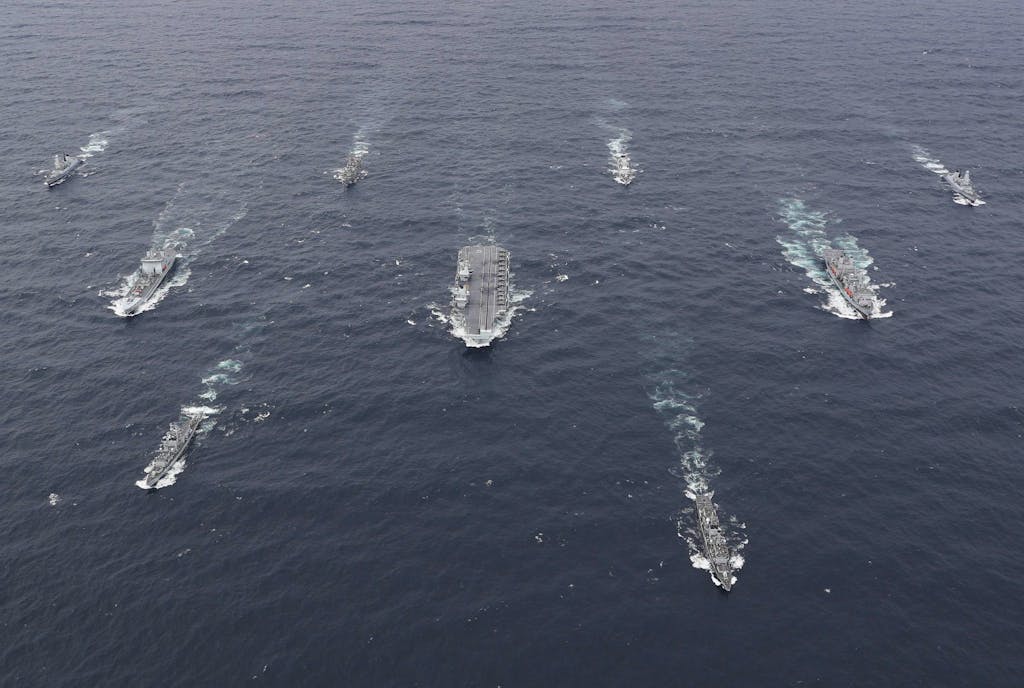
What is the UK Carrier Strike Group doing?
HMS Queen Elizabeth is the deployed flag ship for Carrier Strike Group 21 (CSG21), a deployment that will see the ship and her escorts sail to the Asia-Pacific and back. The Carrier Strike Group includes ships from the United States Navy, the Dutch Navy, and Marines from the US Marine Corps as well as air assets from 617 Sqn, 820 NAS, 815 NAS and 845 NAS.
CSG21 will see the carrier along with her Strike Group work with over 40 countries from around the world. The Strike Group will operate and exercise with other countries Navies and Air Forces during the 7 month deployment.
Recently, the Strike Group joined coalition operations in the Eastern Mediterranean; an historic milestone as British and American F-35B strike fighters flew the first operational missions from a Queen Elizabeth-class carrier, as they stood ready to strike at Daesh.

Commodore Steve Moorhouse, Commander United Kingdom Carrier Strike Group, said:
“The Carrier Strike Group’s period working with our NATO partners in the Atlantic, Mediterranean and Black Seas offers unmistakable proof that the United Kingdom’s most important overseas defence commitment remains the security of the Euro-Atlantic region. While HMS Queen Elizabeth launched counter-Daesh missions over Iraq and Syria from the Eastern Mediterranean, HMS Defender and HNLMS Evertsen were conducting concurrent operations 1600 miles away in the Black Sea – true strategic reach.
Meanwhile, our programme of defence engagement involved a huge amount of work in support of British Embassies and High Commissions, but from Alicante to Alexandria and Bar to Batumi, the message was the same: Britain’s friends and allies are delighted to see the Royal Navy back in town. Now we head east, towards the rising economies of the Indo-Pacific. From the Strait of Gibraltar to the Strait of Malacca, CSG21 offers unprecedented influence and engagement in support of Global Britain.”



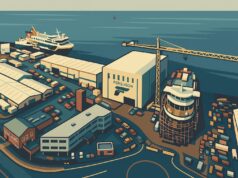
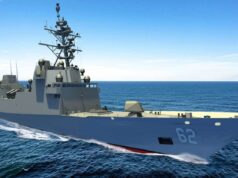
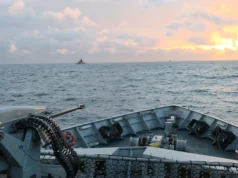

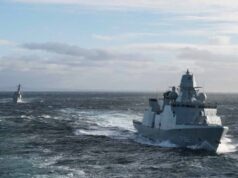
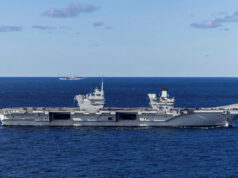
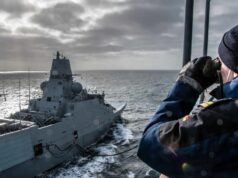
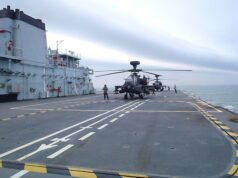


Will the next stop be Oman in a few days? Will some or all of the CSG then head into The Gulf or straight across to India for exercises? I wonder if any individual vessels will visit The BIOT for a rare photo op!
I think the CSG will wait in Oman for some
days, for the crew to recover from Covid and Diamond to be repaired.
I wonder if they’ll add some Harpoons onto the Defender while it’s in port or maybe at a latter port?
A Bristish fleet carrier operating with the US Pacific Fleet. It has been a long time since that happened. I look forward to hearing how they get on.
The documentary of this voyage is going to be a must see as far as I am concerned. Anyone any idea when the BBC will be broadcosting it?
Cheers CR
I forgot about that future bit of viewing pleasure.
Hi Jonathan,
The episode in the SCS will be interesting viewing, even if the PLAN are professional and polite. Hopefully, there’ll be some nive close ups of the Chinese surface fleet, preferably not too close obviously.
I am also keen to see how our US friends get on serving on board a RN ship in such numbers and for such an extended period of time. Beers aside, from what I have read there are a number of operational practices that are very different between the two navies. For example, the armours on US carriers assemble the weapons in the main magazine, on the QE there is a weapons assembly area seperate to the main magazine. This means (to paraphrase a US Navy armourer) that they cannot just nip along to the shelf and grab what they need, they have to order up a head of need and get it delivered to their work station (by robots I guess) 🙂
Anyway, looking forward to that viewing.
Cheers CR
Hello CR!
Unfortunately, I think it might still be some time away.
Obviously, the CSG and the embarked film crew will not be back until around December (pending no significant hold-ups), then the MoD is presumably going to have to sanitise the 7+ months of raw footage and redact any possible security leaks (it’s likely that the film crew are aware of what and where they can and can’t film and will most certainly demonstrate restraint, as well as following the guidance of the command staff on such matters, however, it would be all to easy for a wide shot of the bridge to glimpse a screen or a microphone to pick up some chatter) so every second would be reviewed so that is likely going to take a few months.
After that, it comes the equally hard part for the BBC Two production crew of refining all the raw footage into presumably 3 (Maybe more) hour-long episodes that cover the main legs of the journey, narrating and providing the soundtrack etc. All that so that the end result is to have a documentary that remains factual, enlightening, and enjoyable just as was achieved in the last production a few years back. This is likely going to take the most time, probably several months to our misfortune.
I sadly suspect that production likely won’t finish until possibly this time next year or later. (I could be wrong as I don’t know the true production timeline of the last season to get a possible comparison)
All that said, I, and presumably many others will thoroughly agree with you that this will be a must-see and I frankly cannot wait to see what comes out of it.
Hi CR… Info from a good contact in the BBC “You will be pleased to hear that the BBC is doing a series on CSG 21. It’s being done by Chris Tyrell who is embarked on the Carrier throughout the deployment. I’d imagine it will be out either at the end of the year – or early next year”.
Cheers, y’erself!
Hi Crabfat,
Thanks for that. Much Appreciated.
I’ll keep a look out for that…
Cheers CR
I know its slightly of track but I was wondering if the RN did any shock trials such as what the Americans are doing with their Ford class carrier? I have often wondered how effective the auto loading system on the QE would function after a hit or near miss?
Hi Ron,
I don’t remember seeing anything about such a full test being carried out on the QEC. There are subsystem test facilities in Rosyth. This article on Navy Lookout gives more details about how the QEC are protected, it is possible that there is some armour included, but no details given.
Cheers CR
Since it’s a combined US and RN exercise, I would hope the documentary is show stateside as well.
They should take the opportunity to put the American point of view of operating on the RN carrier aswell, be a good viewing opportunity for the BBC in the US.